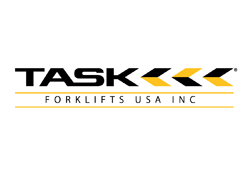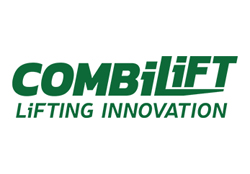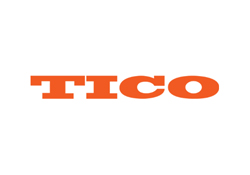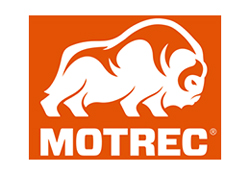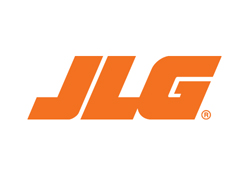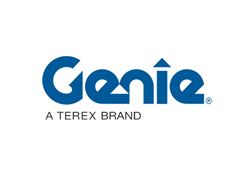Understanding the Advantages of Using Reusable Rfid Tags in Modern Inventory Management
In the ever-evolving landscape of inventory management, businesses are continually seeking innovative solutions to enhance efficiency and reduce costs. One such advancement is the incorporation of Reusable RFID Tags, which offer a multitude of benefits over traditional inventory tracking methods. These cutting-edge tags not only streamline the inventory process but also contribute to sustainability by minimizing waste associated with single-use alternatives. In this guide, we will explore the various advantages of utilizing Reusable RFID Tags in modern inventory management systems. From improving accuracy in stock counts to enabling real-time data tracking, these innovative tools are reshaping the way companies handle their inventory. By understanding the full potential of Reusable RFID Tags, businesses can optimize their operations and stay competitive in an increasingly demanding market.
Benefits of Reusable RFID Tags in Streamlining Inventory Tracking
Reusable RFID tags are revolutionizing inventory management by providing significant advantages over traditional tagging methods. One of the primary benefits is the drastic reduction in long-term costs. A recent industry report indicates that the smart label market is expected to reach $25 billion by 2025, driven largely by the adoption of reusable RFID technology. Organizations can reduce their expenditure on labels considerably since these tags can be used multiple times, unlike their disposable counterparts.
Additionally, reusable RFID tags streamline inventory tracking, enhancing operational efficiency. With real-time data capture capabilities, businesses can monitor stock levels and locations more accurately, leading to reduced errors and improved supply chain transparency. Reports show that companies implementing RFID technology have experienced a 30% increase in inventory accuracy. This improved precision facilitates better decision-making and reduces the time spent on manual stocktaking.
Tips: To maximize the benefits of reusable RFID tags, ensure staff are adequately trained on the technology. Regularly update inventory data to maintain accuracy. Lastly, consider integrating RFID systems with existing inventory management software for a seamless tracking experience.
Cost Efficiency: How Reusable RFID Tags Save Money Over Time
Reusable RFID tags are transforming inventory management by significantly cutting costs over time. According to a recent report by Grand View Research, the global RFID market is projected to reach $40 billion by 2026, driven largely by the increasing demand for efficient supply chain solutions. Traditional inventory management methods involve high operational costs, from manual tracking to frequent replacement of disposable tags. In contrast, reusable RFID tags, which can be used multiple times, drastically reduce the need for continual purchasing, leading to substantial savings. An analysis from the RFID Journal indicates that businesses can save up to 30% on tagging expenses annually by switching to reusable tags.
Furthermore, reusable RFID tags enhance operational efficiency, contributing to further financial benefits. A study conducted by the University of Arkansas revealed that companies utilizing RFID technology experienced a 15% increase in inventory accuracy. This precision minimizes stock discrepancies and reduces costs associated with overstocking or stockouts. By leveraging reusable RFID tags, companies not only decrease their direct labeling expenses but also streamline their inventory processes. Thus, the adoption of these tags is not just an environmental consideration but a strategic financial decision that offers a compelling return on investment.
Environmental Impact: Reducing Waste with Sustainable RFID Solutions
The growing concern for environmental sustainability has led to a significant shift towards sustainable solutions in various industries, including inventory management. Reusable RFID (Radio Frequency Identification) tags represent a pivotal advancement in reducing waste. According to a report by the Global Industry Analysts, the RFID market is expected to reach $40 billion by 2026, driven in part by demand for more eco-friendly technologies. By implementing reusable RFID tags, companies can drastically minimize the need for single-use labels, leading to less plastic waste entering landfills.
The impact of switching to reusable RFID solutions is profound. For example, a study from the Nonprofit Environmental Group highlights that traditional disposable RFID tags can generate nearly 50 million tons of plastic waste annually. In contrast, reusable tags, which can be used for multiple inventory cycles, not only reduce waste but also lower operational costs over time. Companies utilizing these sustainable RFID solutions report savings of up to 30% in their labeling costs, while simultaneously contributing to their corporate social responsibility goals and enhancing their environmental initiatives. This transition not only supports greener operations but also resonates with consumers who increasingly prefer brands that prioritize sustainability.
Improving Accuracy: Enhancing Inventory Management with RFID Technology
The adoption of RFID technology in inventory management has revolutionized the way businesses track and manage their stock. By utilizing reusable RFID tags, companies can significantly improve the accuracy of their inventory records. Unlike traditional barcode systems, which require line-of-sight scanning, RFID tags provide real-time data capture without the need for physical interaction, reducing human error and enhancing overall efficiency. This increase in accuracy not only streamlines the inventory process but also helps maintain optimal stock levels, minimizing both overstock and stockouts.
In addition to improving accuracy, reusable RFID tags offer long-term cost savings and sustainability benefits. These tags can withstand multiple inventory cycles and can be easily reprogrammed for different products, reducing waste and the need for constant repurchase. Furthermore, by ensuring that inventory data is always current and precise, businesses can make better-informed decisions regarding purchasing and logistics. This seamless integration of RFID technology not only leads to smoother operations but also enhances customer satisfaction by ensuring products are available when needed.
Integration Tips: Best Practices for Implementing RFID in Your Operations
Implementing RFID technology in modern inventory management can significantly streamline operations and improve accuracy. However, successful integration requires careful planning and execution. One of the best practices is to conduct a thorough assessment of your current inventory system. Identify specific areas where RFID can provide the most benefit, such as tracking high-value items or improving stock replenishment processes.
Another key tip is to invest in training your staff. Familiarizing employees with RFID technology and its benefits can lead to smoother adoption and greater buy-in. Providing hands-on training sessions will ensure that everyone understands how to utilize the system effectively.
Finally, consider starting with a pilot project. Implementing RFID on a smaller scale allows you to troubleshoot potential issues before a full rollout. Carefully monitor the results and gather feedback to refine your approach, ensuring that your final implementation aligns well with your operational goals. By following these steps, businesses can maximize the benefits of RFID technology in their inventory management processes.
Understanding the Advantages of Using Reusable RFID Tags in Modern Inventory Management
| Feature | Description | Benefits | Best Practices for Implementation |
|---|---|---|---|
| Durability | Reusable RFID tags are designed to withstand harsh environments. | Reduced replacement costs and improved long-term reliability. | Choose tags suitable for your operational environment (e.g., moisture, heat). |
| Cost-Effectiveness | Lower per-item cost when tags can be reused multiple times. | Significant savings over time, especially for high-volume businesses. | Implement a tracking system to manage the reuse of tags efficiently. |
| Enhanced Tracking | RFID tags enable real-time inventory tracking and visibility. | Improved accuracy in inventory management, reducing stock discrepancies. | Integrate RFID systems with inventory software for seamless updates. |
| Environmental Impact | Reusable RFID tags reduce waste and promote sustainability. | Helps companies meet environmental regulations and improve brand image. | Train staff on the importance of sustainability in operations. |
| User-Friendly Technology | RFID systems are easier to implement compared to barcode systems. | Faster scanning and decreased labor costs for inventory counts. | Provide comprehensive training to staff on new technology. |
